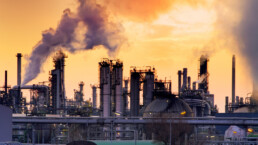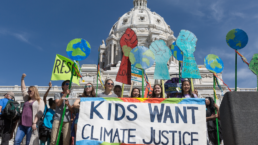All the usual suspects have lined up against the Environmental Protection Agency’s proposed tightening of air pollution regulations.
by Kate Aronoff, The New Republic
Who’s against saving tens of thousands of lives every year? The Environmental Protection Agency last week announced a proposal you’d think everyone would cheer: tightening decade-old regulations on air pollution, with massive projected public health benefits.
Yet the titans of industry aren’t happy. Asked about the proposed changes by The Washington Post, Chad Whiteman, vice president of environment and regulatory affairs for the U.S. Chamber of Commerce’s Global Energy Institute, said that while “it is important to continue making progress, we are concerned that the proposed regulation would stifle manufacturing and industrial investment and exacerbate permitting challenges that continue to hamper the economy.”

The EPA has proposed lowering annual exposure limits for particulate matter produced from power plants, highways, construction, and other industrial facilities. Particulates of 2.5 micrometers in diameter (PM2.5), including soot, are among the most deadly air pollutants thanks to their ability to seep through lung tissue and into the bloodstream. Long- and short-term exposure can lead to heart attacks, asthma attacks, and premature death; long-term exposure to particulate matter has been found to cause between 13,500 and 52,100 premature deaths each year. Air pollution and its health effects are disproportionately concentrated in communities of color. A 2019 study from the Union of Concerned Scientists found that people of color in the Northeast and mid-Atlantic breathe 66 percent more air pollution from vehicles than white residents. The study further found that white residents constituted 85 percent of people living in areas with the lowest PM2.5 pollution from on-road vehicles.
Recent Posts
Politicians Are Betraying Gen Z On Climate
July 10, 2025
Take Action Now While Gen-Zers thrift, knit, crochet, and find other ways to reduce our footprints, Trump and the GOP are greenlighting more climate…
Trump’s Deportation Threat Against Zohran Mamdani Is Shameful
July 10, 2025
Take Action Now In only half a year of Donald Trump’s presidency, he and his allies have turned deportation into an explicitly political threat…
Teachers Union Votes To Cut Ties To The Anti-Defamation League
July 10, 2025
Take Action Now In a momentous vote, the National Education Association voted to cut all ties with the Anti-Defamation League. The reason? “Despite…
2025 War Abolisher Awards Go To Albanese, Nader, Waters
July 9, 2025
Take Action Now The purpose of the awards is to honor and encourage support for those working to abolish the institution of war itself.By World…




